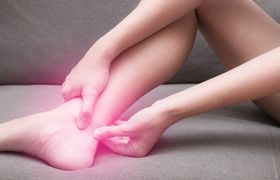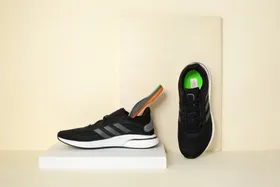Easy Foam Roller Routine for Curing Shin Splints
Updated December 12, 2024

Shin splints are a common overuse injury associated with pain along the inner edge of the tibia bone in the lower leg, typically resulting from repetitive physical activities, often involving running or jumping. Symptoms of shin splints include tenderness and pain along the inner edge of the shin bone, as well as mild swelling in the area.
Foam rolling is a form of self-myofascial release, using a cylindrical foam roller to alleviate tight muscles, soreness, and inflammation in various muscles throughout the body. Foam rolling can also increase joint range of motion by releasing the surrounding muscles. Foam rollers can specifically target the lower leg muscles to treat and manage symptoms of shin splints. Regular foam rolling can alleviate soreness associated with vigorous exercise and improve overall recovery. Here is an easy foam rolling routine for reducing shin splint symptoms that can be done several times a week.
In addition to foam rolling, other conservative management strategies can be used to treat this condition. These include rest, ice, orthotics, massage, and stretching. Combining these treatments can effectively address shin splints.
How to Foam Roll Shin Splints
To manage your shin splints effectively, foam rolling techniques should target the lower leg muscles, namely the gastrocnemius (calf) and tibialis anterior muscle in the front of the lower leg. It is essential to listen to your body when performing foam rolling techniques: go slowly, stay relaxed, and don't force yourself into any adverse pain. If you notice a muscle knot, hold pressure on the knot for up to a minute. The foam rolling routine for your shins should take approximately 5-10 minutes maximum and can be done 2-3 times a day.
Gastrocnemius Massage
Follow these steps to foam roll massage your gastrocnemius muscle:
- Sit on the floor with the foam roller in front of you, placing the leg you intend to massage on top of the foam roller.
- Bend the opposite knee, placing the foot on the floor for stability.
- Start with the foam roller lower down on the muscle towards the ankle.
- Lift your buttocks off the floor with your hands, allowing pressure to be placed through the calf muscle on the foam roller.
- Then slowly roll your calf muscle up and down over the roller.
- Roll each leg for 1 - 2 minutes.
Tip: You can rotate the leg outwards to target the muscles on the outer aspect of the leg and cross the legs to add additional pressure to the calf muscle.
Tibialis Anterior Massage
Follow these steps to foam roll massage your tibialis anterior muscle, located in the front of your lower leg:
- Kneel on the floor with the foam roller in front of you.
- Bend at the knees while balancing your body weight on the balls of your feet and your knees. Allow your heels to touch your buttocks or as close as you can comfortably.
- Place the foam roller under your shins, as close to your knees as possible. Be sure not to put your knees on the foam roller.
- Lean forward, placing your hands on the floor for stability.
- Using your arms to move your body, roll the foam roller down the shins and back up again.
- Point the toes when you reach the lower area of your tibialis muscle.
- Return to the starting position and repeat back and forth for 1-2 minutes.
Say Goodbye to Shin Splints
While foam rolling has proven to be a great method for treating and alleviating symptoms of shin splints, self-management and treatment aren't limited to foam rolling. Orthotics are a great treatment option that can also prevent this condition. The best insoles for shin splints are custom orthotics that provide support and cushioning to the feet, reducing shock placed through the tibia bone, and improving foot-ankle alignment.
Upstep offers a range of custom orthotics specifically designed for various sports to help those with foot problems participate in their preferred activities pain-free and without the risk of injury. Upstep custom orthotics are made using casts of your feet and are created by professionals using high-grade, durable materials. Upstep's orthotics come with a 120-day money-back guarantee and free shipping on all orthotics purchased online.








